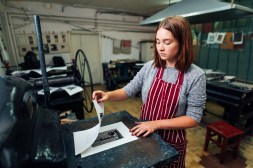Unveiling the Hidden Benefits: Why Public Art is Crucial in Urban Settings
In the bustling concrete jungles of urban environments, public art stands as a beacon of beauty, creativity, and cultural expression. Beyond its aesthetic appeal, public art plays a pivotal role in shaping and transforming cities into vibrant and inclusive spaces. From enhancing social cohesion to boosting tourism and economic growth, the importance of public art cannot be underestimated. Let’s delve deeper into the hidden benefits that make public art crucial in urban settings.
Fostering Community Engagement and Social Cohesion
Public art has an incredible power to bring people together and foster a sense of community engagement. By providing shared spaces for reflection, interaction, and dialogue, it breaks down social barriers and encourages connections among diverse individuals. Public art installations often become meeting points for locals and tourists alike, creating a sense of belonging and pride in one’s city.

Moreover, public art can also serve as a catalyst for social change by addressing important societal issues such as inequality, discrimination, or environmental concerns. It provides a platform for artists to convey powerful messages that resonate with communities on a deep level. Through collective appreciation of these artworks, conversations are sparked, challenging societal norms and fostering positive change.
Enhancing Economic Growth and Tourism
Public art has proven to be an effective tool for driving economic growth in urban areas. When strategically placed in commercial districts or tourist hotspots, it attracts visitors who spend time exploring local businesses or attending events related to the artwork. The presence of captivating sculptures or murals not only adds vibrancy to the surroundings but also encourages foot traffic – benefiting local economies.
Tourism is another area where public art shines as an integral attraction factor. Travelers seek authentic experiences that go beyond traditional landmarks; they want to immerse themselves in the local culture. Cities renowned for their public art installations become sought-after destinations that attract tourists from far and wide – boosting revenue for the local hospitality industry, restaurants, and other businesses.
Beautifying Urban Spaces and Enhancing Quality of Life
One of the most obvious benefits of public art is its ability to beautify otherwise mundane urban spaces. Empty walls, vacant lots, and underpasses are transformed into captivating visual spectacles that stimulate the senses and elevate the overall aesthetic appeal of a city. These art installations have the power to turn neglected areas into vibrant cultural hubs, breathing new life into forgotten corners.
Not only does public art enhance the visual appeal of urban environments, but it also has a direct impact on improving residents’ quality of life. Studies have shown that exposure to art in public spaces can reduce stress levels, increase happiness, and create a sense of pride in one’s community. It creates an atmosphere where people feel safer and more connected to their surroundings – ultimately contributing to their overall well-being.
Promoting Cultural Identity and Diversity
Public art serves as a powerful tool for promoting cultural identity and celebrating diversity within urban settings. Cities are melting pots of different cultures, backgrounds, and perspectives – public art provides an avenue for artists to express these unique stories through their creations. From indigenous artworks that honor ancestral traditions to contemporary pieces that reflect modern society’s diversity, public art becomes a tangible representation of a city’s cultural fabric.
By embracing diverse artistic expressions, urban environments become inclusive spaces that celebrate all members of society – regardless of their background or beliefs. Public art installations can also act as educational tools by shedding light on lesser-known histories or marginalized communities – encouraging dialogue and understanding among citizens.
In conclusion, public art plays an indispensable role in shaping urban environments by fostering community engagement, enhancing economic growth and tourism, beautifying spaces, and promoting cultural identity and diversity. Its hidden benefits go beyond mere aesthetics; they contribute to the social fabric and well-being of cities around the world. As we continue to recognize its importance, let us encourage the integration of public art into our urban landscapes, ensuring a brighter and more vibrant future for all.
This text was generated using a large language model, and select text has been reviewed and moderated for purposes such as readability.


